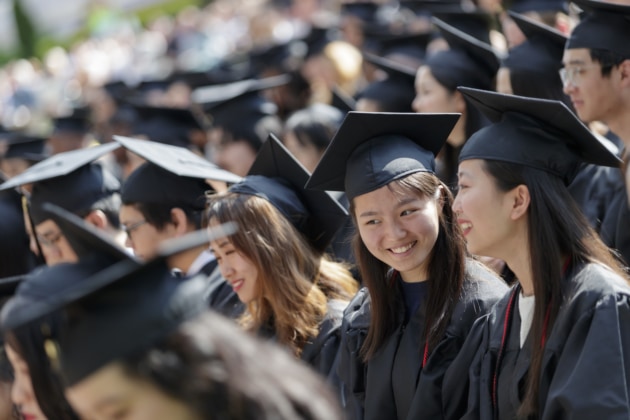Two quality education systems
Since 2014, Brenau University has operated successful partnerships with colleges and universities in China. In this story, students and professors from Brenau and its partner institutions dig into the similarities and differences between these two world leaders in higher education.
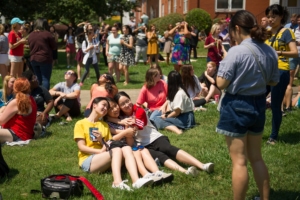
The results are in and clear: Studying alongside peers from another culture jump-starts careers, enhances education and makes for well-rounded citizens. It’s an all-around win.
Since 2014, Brenau has had partnerships with higher education institutions in China developed to help do exactly that.
The partnerships began with 2+2 agreements with Anhui Normal University in Wuhu, China, that allow ANU students to complete the first two years of their undergraduate studies on their home campus and their last two years at Brenau. In 2017, the university signed a similar 3+2 agreement with Anhui Business College.
All these agreements raise a few questions: Why Brenau? Why come to the United States at all? And, finally, just how different are we, really?
Complementary approaches
ANU and Brenau University are constantly evaluating the best mode of program delivery for student success. The first partnership was for a 2+2 program in early childhood teacher education. An English-major program followed, with graduates from both programs advancing to master’s-level studies at institutions including Columbia, Pennsylvania State and Johns Hopkins universities.
“This university really has attached a great importance to having such substantial programs with Chinese universities,” said Jinze “Eugene” Zheng, special assistant to the vice president at ANU, during a visit to the university in 2017. Chinese students and administrators often choose American names for engaging with universities in the U.S.
Brenau President Emeritus Ed Schrader — who is heading the Center for Chinese Culture & Language at Brenau, the outgrowth of the first partnerships with Anhui Normal — says China and the U.S. have had somewhat different but complementary approaches to education because institutions like Brenau have the luxury of small classes.
“The teacher has more personal time to spend with the individual student, and the class has more time for creative ideas to be discussed,” he says. “I believe that Chinese education has developed to be the best system for teaching information so that students remember and recall the specifics.”
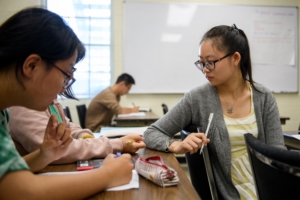
Li Gang, financial management professor at Anhui Business College, says smaller class sizes are less common in China, a country of about 1.4 billion people.
“In China, we offer higher education to a very large population with limited resources,” Gang says.
Gang was one of 10 delegates from Anhui Business College who attended the Brenau University International Education Seminar for Business Educators in June. During the seminar, Anhui Business College faculty said that Brenau faculty are more collaborative and encourage students to ask questions.
“American instructors use more examples or demonstrations to explain something,” says Xueyun “Anna” Feng, a sophomore music major from Guiyang, China. “Chinese instructors are more exact. They use more concepts from books and explain something from a specific knowledge point.”
Other differences include advising and scheduling in the U.S. versus China. Students in the states are responsible for their class schedules. Large enrollment numbers in Chinese schools do not allow for this same flexibility.
And while Brenau English professor Rebekah Taylor-Wiseman acknowledges there are some differences between Chinese and American teaching styles, that is, she says, really the whole point.
The learner-centered environment
Taylor-Wiseman first taught in China in 2016, when Brenau and ANU started the 2+2 program for English majors. She continues to teach Chinese students in the program who come to Brenau for their final two years of studies.
“I teach them exactly the same way I would teach the American students,” she says. “I learned this in China: I was trying to adapt to them, but that is, in my opinion, completely the wrong approach. I think they really thrive when you challenge them, and they came here to learn in the Western systems.”
Taylor-Wiseman says while her Chinese students are not often accustomed to driving class discussion and ideas — what is called “the learner-centered environment” — they always rise to the occasion.
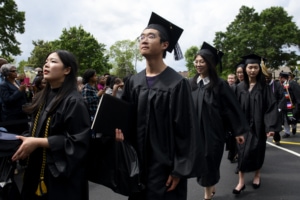
“My Chinese students are always incredibly bright, hard-working and diligent,” she says. “They want to figure things out. I would say it’s about finding the confidence, the voice, the agency to really express what they think and feel, and they really thrive under that creative environment.”
Taylor-Wiseman says she believes the students come to the U.S. with an expectation that everything about their experience will be different, but the differences are environmental and intangible. They can be felt but not seen.
Feng calls it the “energy” of the American classes.
“It is really relaxing, and I can discuss my thoughts openly in American classes,” she says. “But what I like best about Chinese education is the efficiency. Following the pace of the education efficiently is crucial.”
Taylor-Wiseman says the Chinese education system is in many ways not “as old-school as the picture people have in their heads.”
“A lot of it is, in my experience, simply getting them interested and involved,” she says. “And that’s true with American students, too. I had an 8 a.m. American lit class where they all just stared at me. That’s on me to do something to get them interested. Yes, some of the difference is that Chinese students were raised to primarily receive knowledge, but it’s not that simple.”
“I always tell students in our Chinese partner schools that they have the chance to experience the two best educational systems in the world if they go to China and they go to America.”
World knowledge
Despite the financial, political and cultural hurdles, it is common for Chinese families to save to send their children to the U.S. after high school. According to a study by the Wall Street Journal, China is the leading source of international students in the U.S., accounting for roughly a third of money spent by all international students in the country.
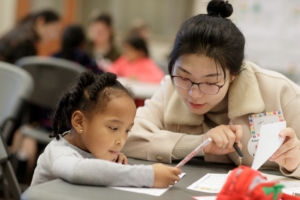
“The people in China believe that the higher education in the United State is more diverse and beneficial to the development of their children,” says Cheng “Andy” Zhanggen, business English director from Anhui Business College, who plans to send his own son and daughter to the U.S. one day.
Feng says she wanted to study in the states because it is “a great opportunity to increase my knowledge of the world.”
Such travels benefit not only the Chinese students but also the American students they share a classroom with, according to Jordan Anderson, Brenau director of international initiatives.
“The average Brenau student probably can’t travel the world, at least not in the next few years,” she says. “It’s not easy to go to the opposite side of the planet. But I think this is a really good way of getting our students to understand it is possible, and maybe our students will realize they can study abroad for a semester. And, even if they never leave the country, in their future professions they will need to have the skills to interact with people of other cultures and to understand other perspectives.”
Schrader says he believes the two nations together offer an exceptional education.
“I always tell students in our Chinese partner schools,” Schrader says, “that they have the chance to experience the two best educational systems in the world if they go to China and they go to America.”
